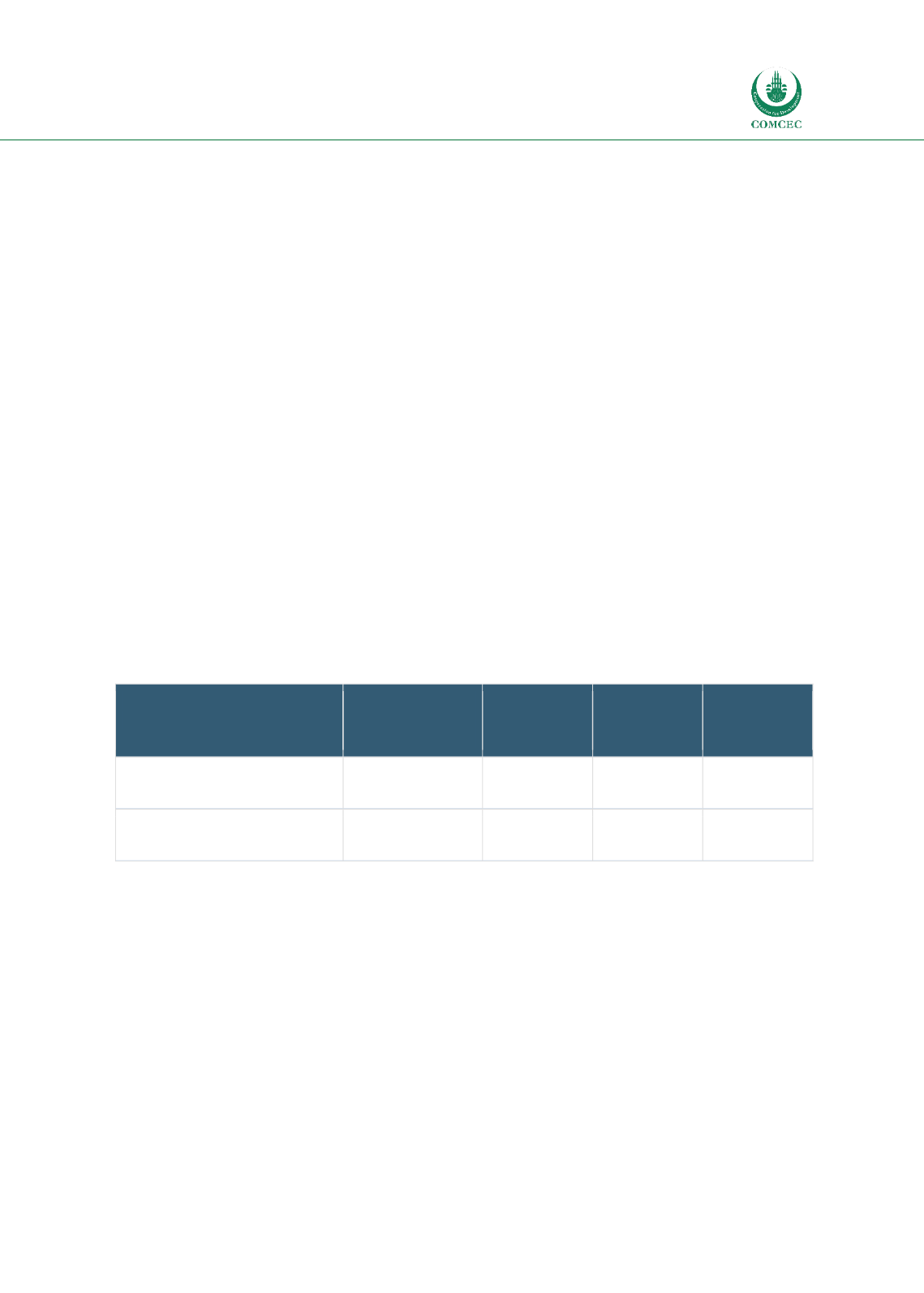

Reducing On-Farm Food Losses
In the OIC Member Countries
89
middlemen have to sell the fish at reduced prices at the end of the day of harvesting in order to
avoid a total loss of income.
With 3.8 million tonnes of aquaculture produce per year in Indonesia, and on-farm losses of 5%,
results in aquaculture food losses of 190,000 tonnes per year. Approximately 400,000 tonnes of
the total annual production is shrimp, and 5% losses is equal to 20,000 tonnes. Shrimp contains
1,200 kilocalories per kg, 22% of which is high quality protein (66 g per kg). The loss in food
value for on-farm shrimp losses is approximately 24 billion kilocalories and 1.32 billion grams
of protein. This amount of lost food could have supplied the protein needs for 72,300 persons
for a full year at 50 g/day.
Approximately 670,000 tonnes of the total annual production is tilapia, and 5% losses is equal
to 33,500 tonnes. Tilapia contains 823 kilocalories per kg, 20% of which is high quality protein
(41 g per kg). The loss in food value for on-farm tilapia losses is approximately 27.6 billion
kilocalories and 1.38 billion grams of protein. This amount of lost food could have supplied the
protein needs for 75,500 persons for a full year at 50 g/day.
Farm gate prices are highly variable, depending on the size and quality of the harvested product,
but the economic consequences of 20,000 tonnes of shrimp/prawn losses at a conservative farm
gate price of US$4 per kg, and 33,500 tonnes of fish losses at a farm gate price of $US1 per kg,
totals US$103 million per year in lost income for Indonesian aquaculture farmers.
Table 3.20: Volume and Market Value of On-Farm Losses of Fish and Shrimp in Indonesia
Total Volume Produced per
Annum
Conservative
Estimates of On-
Farm Losses
Losses in
Volume
Market
Value per
Tonne
Losses in
Value
400,000 tonnes of shrimp
($16 billion)
5%
20,000
$4,000
$80
670,000 tonnes of tilapia
($670 million)
5%
33,500
$1,000
$33.5
Source: On-Farm Visits.
3.8.3. Causes of On-Farm Losses
Most of the on-farm losses for aquaculture are related to the use of poor quality starting
materials, such as fry or seeds, and poor production practices including poor sanitation, pest
management or feed quality. Starting with good quality seed or fish fry is one of the keys to
success in aquaculture production. This, in addition to the use of high quality feeds and
protection from predators, is very important.
Many aquatic insects in their larval and/or adult stages, prey upon fish hatchlings and fry and
compete with them for food. The common insect predators are beetles, including the diving
beetle (Cybister), water scavenger beetle (Sternolophus) and whirling beetle (Gyrinus) which
















